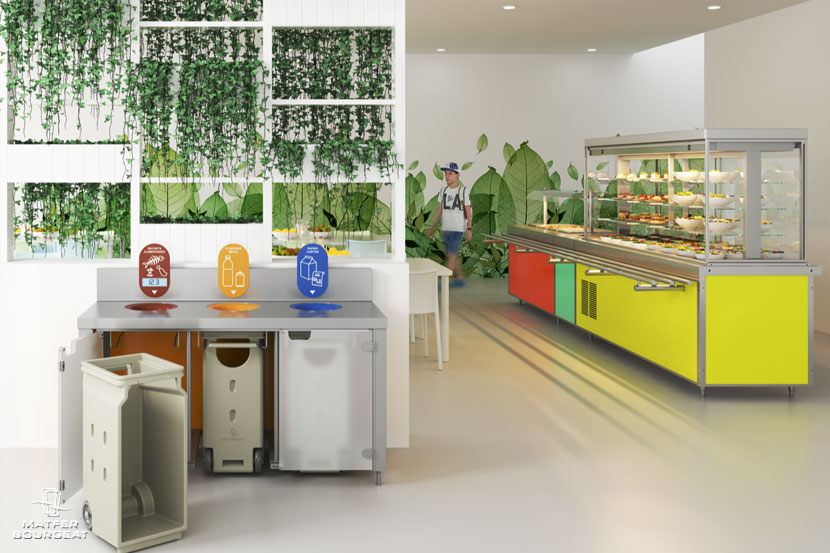Because it is too rich, or just not to your liking: how often have you not finished your meal in a restaurant? Much more often than you do at home. According to figures from Ademe, you lose or waste four times more in restaurants than at home. In total in this sector, 1.33 million tonnes of food are thrown away each year in France.
Read also: Do you give your blood? Your pets can too
Restorers are now called upon to measure losses. Since last October, the Egalim law has made the measurement and treatment of bio-waste compulsory by restaurants which produce more than ten tonnes per year.
The law thus requires restaurateurs to estimate the quantities of food wasted, their cost, and what the savings linked to the reduction of this waste would have enabled them to finance. To avoid restorers from living calculators by hand, entrepreneurs have developed the Easilys connected trash can. Its aim is to simplify the process by weighing in real time everything that is thrown away by the restaurant - or by its customers. " We are interested in all types of catering, but in particular in collective catering," emphasizes Emmanuel Grelaud, one of the three co-founders of Easilys. Previously, operators had to weigh garbage bags one by one in order to measure waste. We thought there could be a more modern solution . ”
These bins will be available in the spring. About fifty restaurants should be equipped, primarily high schools. For the pupils of these establishments, the ritual of lunch in the canteen will change: communicating sorting tables will be installed in the collective catering rooms and will make it possible to weigh the bio-waste when they return their tray. Thanks to this connected table, a student who throws spinach that he has not eaten therefore learns how much biomass can be produced by sorting it.
The objective of the connected device is, of course, not only to encourage sorting but also to limit waste at source. Of course, the student who throws his spinach produces biomass, but he also realizes the extent of the waste for which he is responsible. Thus, he is encouraged to choose the next meal better, and perhaps in less quantity, the food he puts on his plate.
Cook smarter
People who eat fast food are not the only ones to be involved: a bin is also placed in the kitchen to assess the losses that occur during meal preparation. Another assesses what is lost at the end of the service, when certain dishes have been produced in too large quantities for example.
Again, the objective is to rethink in depth the way of thinking about a service. “ In collective catering, we often want there to be as many choices of dishes at 12:30 pm as at 1:45 pm, observes Emmanuel Grelaud. But if we redo a dish for this second schedule, it is very likely that it will end up in the trash. Finally, is it really serious if towards the end of a service, consumers have no choice but between two dishes instead of three, and more than a dessert for example? "
Read also: Disposable plastic cutlery becomes "reusable" to circumvent their upcoming ban
The data are, for restaurateurs, all the more eloquent when they are translated into costs: they can know how much money they have lost because of waste. They can then set down targets, which will be taken into account by the software that links the restaurant's garbage cans. Easilys promises professionals to save, in the end, almost 16% on the price of each plate, by making it possible to readjust the services and readjust the offer in a fine manner. This helps prevent food from ending up in the trash, but also prevents some from finishing the meal on an empty stomach.

